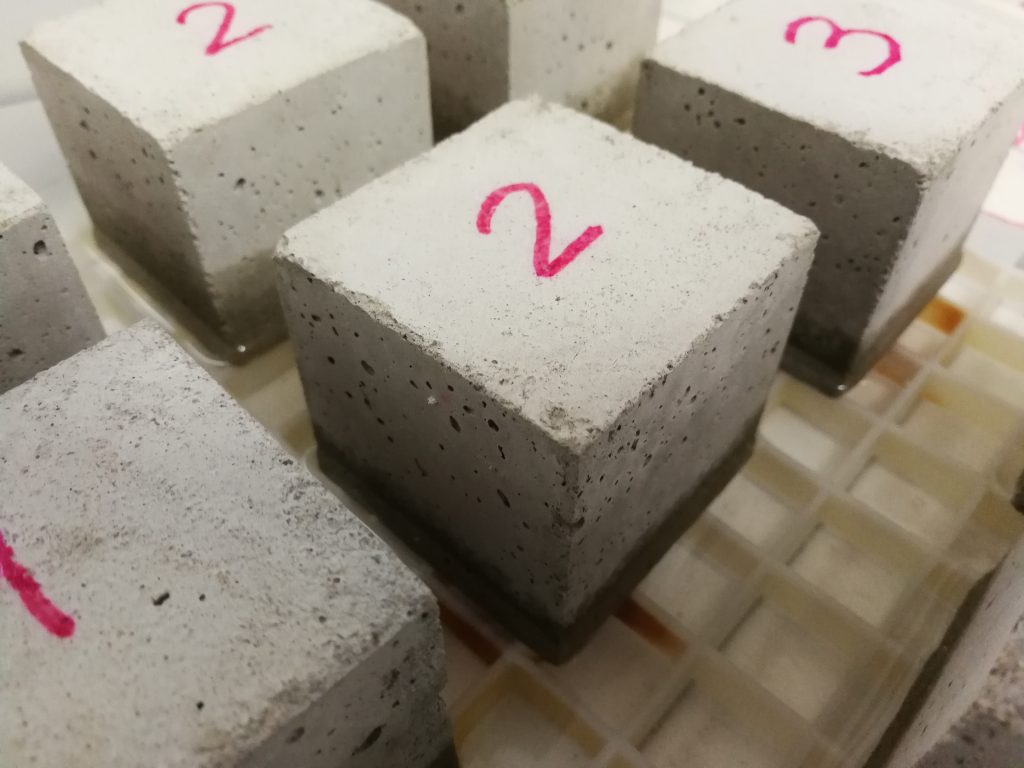Tests on hardened cement
In order to evaluate the properties in the hardened state of the different cementitious formulations, both in the presence and in the absence of the resin, a series of tests are carried out to determine the mechanical strengths, the porous structure, the absorption of water and the retraction of the material.
IRINEMA carries out the tests in the hardened state at the IETcc facilities.

Flexural and compressive strengths
The objective of these tests is to determine the mechanical properties of the cementitious materials that are being developed in relation to the stresses and deformations that they may undergo in order to obtain their working limits.
The bending or flexural test is carried out at 3 points, two parallel supports for the specimen and a bending point that applies the load on the specimen at the central point between the supports. After this, the compression test was carried out on each of the half specimens obtained. In the compression test, external loads are applied to the entire surface of both faces of the sample until it breaks. In both cases, the tests have been carried out in accordance with the UNE 196-1 standard “Cement test methods. Part 1: Determination of resistance”.
Pore volume and distribution
Pore volume and distribution of pores were determined through the mercury intrusion porosimetry method (MIP), using a Micromeritics Autopore IV 9500 porosimeter.
MIP is a technique that, by applying pressure, mercury enters into the pores of the solid. The value of the volume of mercury intruded allows the calculation of the area, pore size distribution, porosity percentage of the material, and real and apparent densities. Identifying the porosity and pore structure of the materials provides information about its transport capabilities.


Water absorption by capillarity
The coefficient of water absorption by capillarity (k) is determined through the UNE 83982-2008 standard: “Durability of concrete. Test methods. Determination of water absorption by capillarity of hardened concrete. Fargelund method”. This value depends on the interconnection of the existing pore network inside the material.
This parameter is determined by periodically measuring the weight gain of a specimen in contact with a 5 mm high layer of water.
Drying shrinkage
Drying shrinkage is the long-term volume change of concrete caused by moisture loss over time in its hardened state. The determination of the linear drying shrinkage or contraction and the linear swelling or expansion in water is carried out in accordance with the UNE 80112-2016 standard: “Cement test methods. Physical tests. Determination of the drying shrinkage and the swelling in water.
The length variation (shrinkage or swelling) of each specimen is measured at different times with a digital length comparator. To enable their measurement, the prismatic specimens have two contact points inserted in the center of the lateral surfaces.
